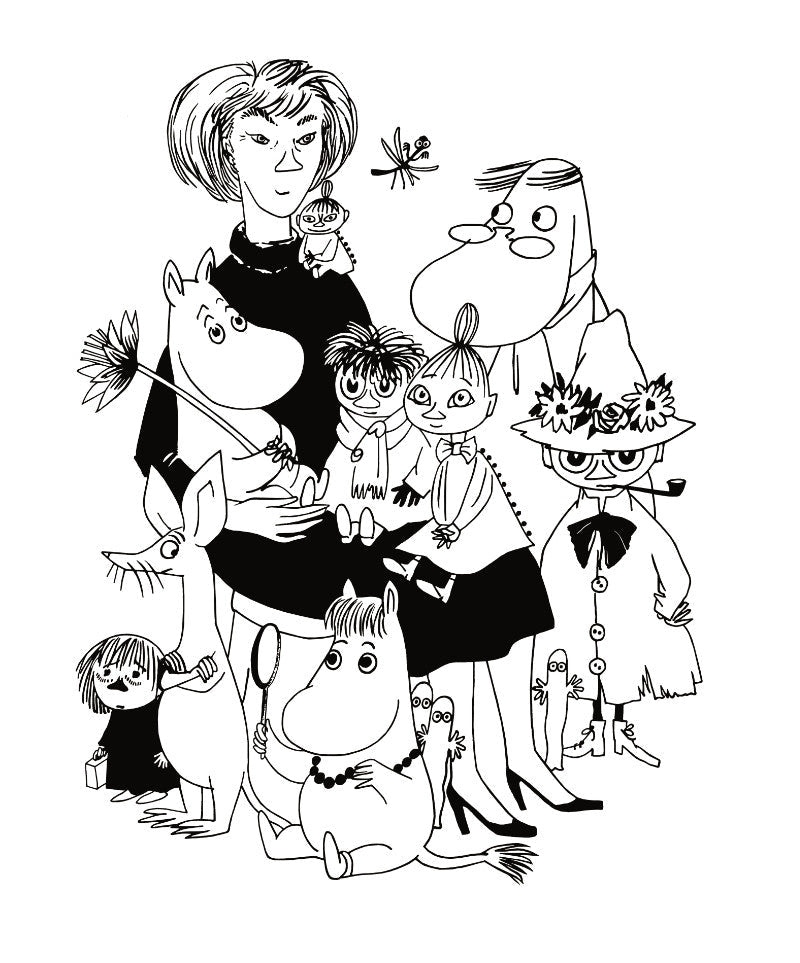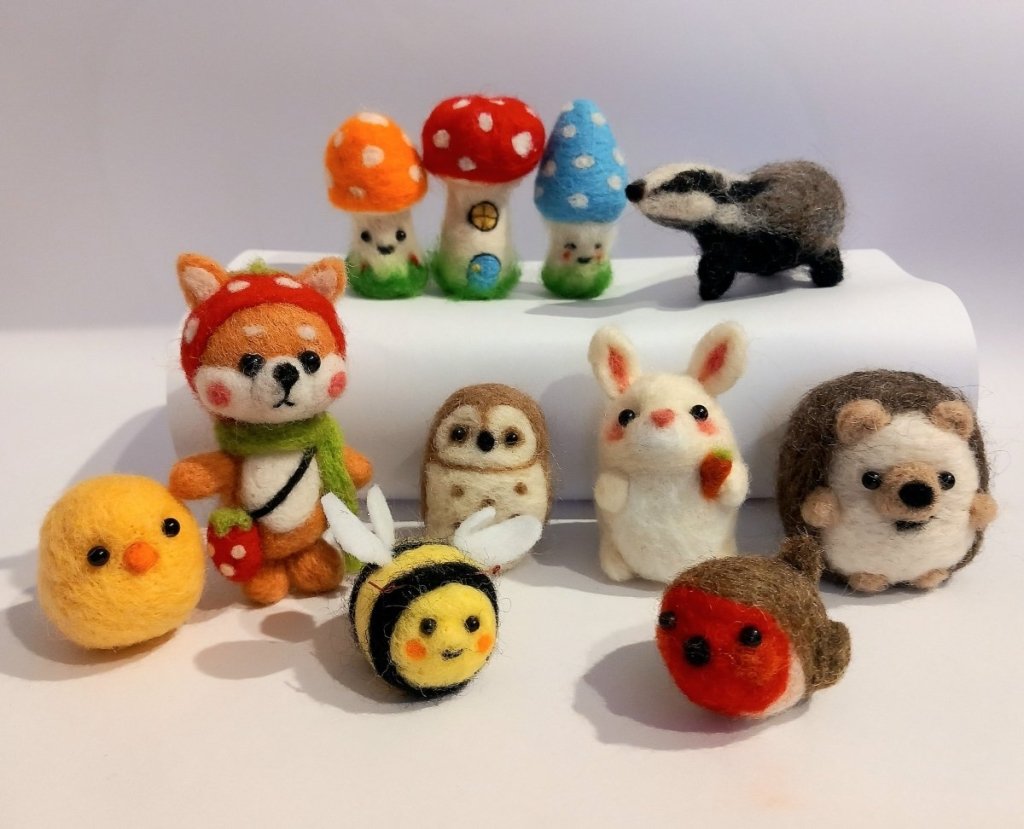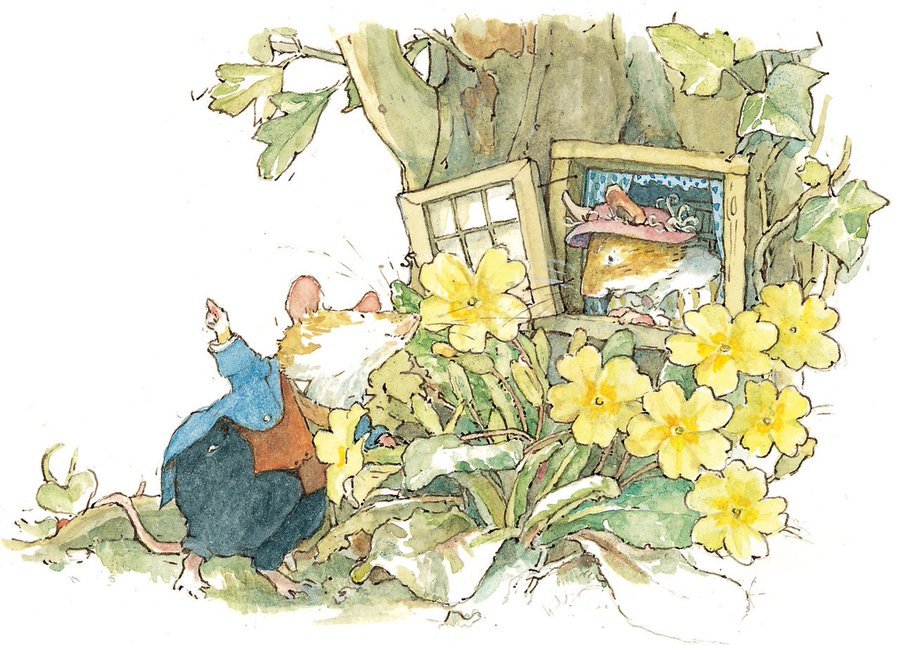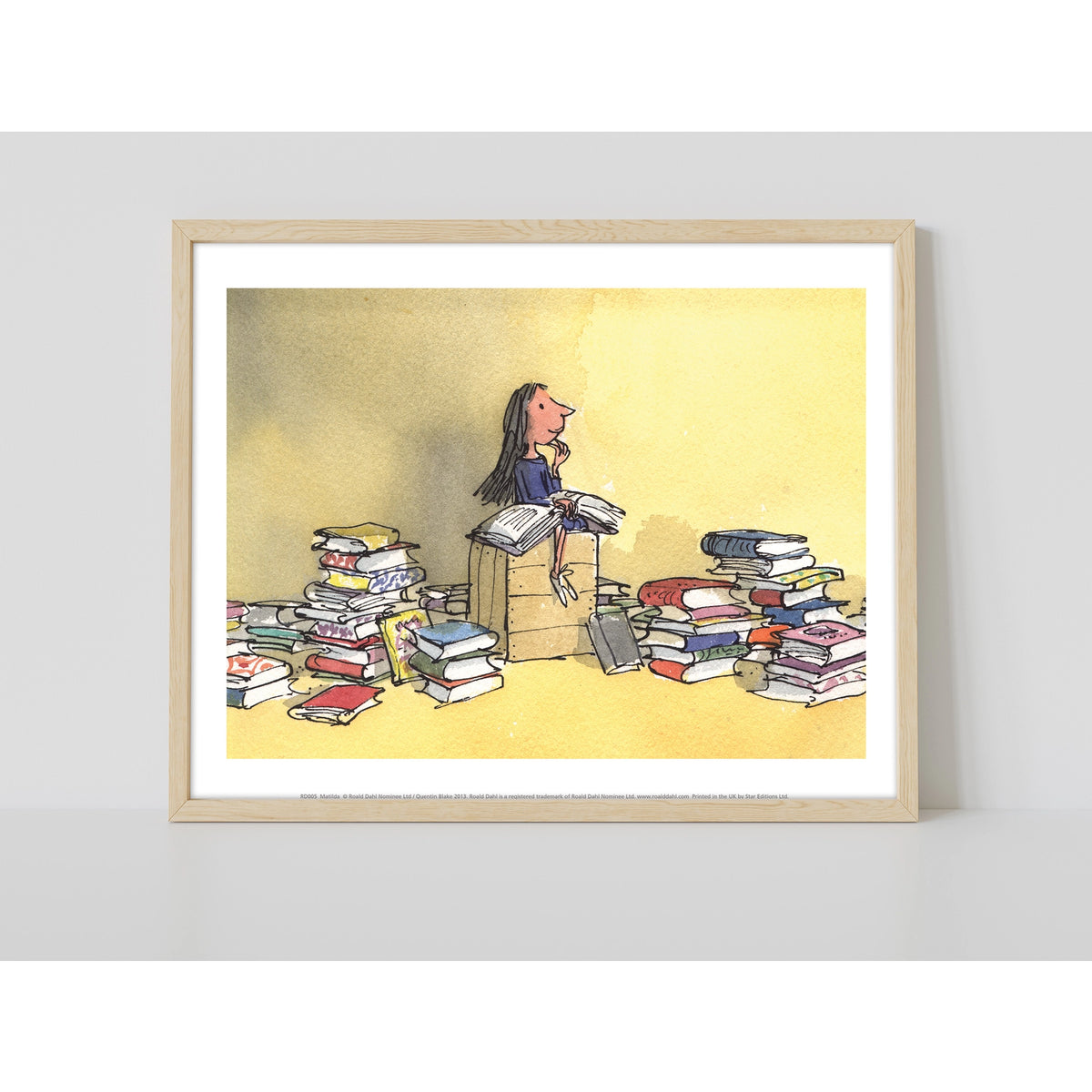More than Moomins: The Life and Works of Tove Jansson, our Illustrator of the Month

 Tove Jansson self-portrait © Moomin Characters™
Tove Jansson self-portrait © Moomin Characters™
Our ‘Illustrator of the Month’ blog series focuses on some of our favourite illustrators, their lives and their works. This is a chance to learn more about the people who illustrated your favourite books, the influences that shaped their art style and storytelling, and some of their lesser known projects.
So far we’ve written on contemporary gamechangers Jon Klassen and Tomi Ungerer, and the classic Swedish children’s author Elsa Beskow. Now it’s time for another iconic Nordic woman, the incomparable Tove Jansson!
Tove Jansson is best known for creating the Moomins, those whimsical hippo-like creatures who first appeared in the 1940s and later exploded across the world. The Moomins are a sensation across central Europe, Scandinavia and Japan, and are recently also becoming more popular in Ireland, the U.K. and the U.S. Though best known for her Moomins, which starred in a series of novels, picture books and a daily comic strip, Tove Jansson was also an accomplished painter. She was a very unconventional character, and her unique contributions to the world are still loved and appreciated by millions.
A Bohemian Upbringing
Tove Jansson was born in 1914 in Helsinki, Finland, to a sculptor father and an illustrator mother. Her parents encouraged their daughter’s creativity from the moment she was born. When she was only three years old her father wrote to her mother : “Maybe our Tove will grow up to be a great artist. A really great artist!”. And he was right! Tove learned to draw almost before she knew how to walk. Many have seen the influence of this Bohemian family in the Moomin family, who are famously laid back, always inviting newcomers into their home and choosing creativity and spontaneity over the practicalities of life. Though intensely prolific as artists, the family also loved to throw parties. And as anyone who is familiar with the Moomins knows, they too love to entertain!
Tove’s family were also an important influence in terms of gender equality. When Tove’s father dreamed that his daughter may become a great artist, he set no limitations on her because she was a girl. Tove’s mother Signe was a strong feminist, pursuing outdoor activities and an independent career despite societal expectations at that time that women should be reserved and dependant. Signe was involved in starting a scouting society for girls, as the scouts had previously only been open to boys. She is still remembered for this contribution in Finland. The inhabitants of Moominvalley, the idyllic world in which the Moomins reside, are famously androgynous. Tove’s niece Sofia told The Guardian that even now people still write to the family asking about the gender of certain characters, and they respond that it does not matter. The Hemulen, an inquisitive researcher who hangs around the Moomin house, is known to be male but wears dresses! If it helps with his ease of movement while collecting specimens, then why not? Anything goes in Moominvalley, as long as you’re not hurting anyone.

A Portrait of the Artist as a Young Woman
Tove began publishing illustrations in magazines while still a teenager. In her teens and early twenties she studied art both at home in Finland and abroad in Sweden and Paris, and she had her first solo exhibition in 1943, aged 28.

An early painting by Tove Jansson, Before the Masquerade, 1943
Photo: Helsinki Art Museum, Hanna Kukorelli
© Tove Janssonin kuolinpesä
In that same year, her first Moomin-like illustrated character appeared in Garm, an anti-fascist satirical magazine. The official Moomin website blog gives an interesting insight into the genesis of this first Moomin figure. The story goes that Tove invented the main Moomin character, Moomintroll, to get back at her brother when they were bickering as children. She drew the ugliest creature she could think of on the outhouse wall of their summer cottage, naming it “Snork”!

The name Moomintroll came later when Tove was staying with her uncle as a student in Stockholm. To discourage her from midnight snacking, Tove’s uncle told her that frightful creatures named Moo-oo-oomintrolls lived in the kitchen cupboard and behind the tile stove, and at night they would come out to press their noses against your leg and blow cold air down your neck! Tove herself said that if she were to pick one formative influence into the design of Moomintroll, it would be the big-nosed trolls drawn by Swedish artist John Bauer.
War and Moomins
The first Moomin novel, The Moomins and the Great Flood, was published in 1945. It was written earlier, upon the breakout of World War Two. Tove’s brother was dispatched to fight and it was a time of great anxiety for the family. Tove herself was depressed by the war and wanted to write something innocent to escape from it, a kind of fairy tale for adults. It wasn’t until years later that a friend pointed out that if the story was finished and illustrated then maybe it could be published as a children’s book.
The book is illustrated in sepia tone watercolours, as well as the pen and ink drawings that would become the hallmark of later Moomin novels. The Moomins and the Great Flood went largely unnoticed but it’s sequels Comet in Moominland and Finn Family Moomintroll made Tove Jansson and Moomins household names all over Scandinavia. Several novels followed, and in 1952 Tove published the first Moomin picture book, The Book About Moomin, Mymble and Little My. Of course she used the picture book format to its full potential, and this is a dynamic book full of bold colours, graphic shapes and cut out segments that lead the action from page to page.
In 1954 The Evening News, a London newspaper, commissioned a Moomins daily comic strip, which had 20 million daily readers in over 40 countries! Understandably, Tove began to find this Moomin saturation detrimental to her other projects. It’s hard to comprehend her workload in the 1950s; her range of public and literary commissions during this decade included everything from a mural for Helsinki’s children’s hospital to illustrations for a Swedish translation of Lewis Carroll’s The Hunting of the Snark.
The demands of a daily comic strip meant that Tove had no time to paint, so her brother Lars took over the comic strip duties in 1960. That same year, she created one of her greatest picture books, Who Will Comfort Toffle. According to the official Tove Jansson website, she wrote this story after a little boy wrote to her about his insurmountable shyness and fear, and signed the letter “Toffle”. In the book, a shy little boy goes on a journey to comfort a scared little girl and defeat the menacing Groke. It was Tove’s belief that the only way to overcome shyness and fear is to find someone even more downtrodden than you are, and support them. That way both of you will find a friend and be able to face things together. Throughout her long career, Tove always wrote back to any “Toffles” who sent her letters, especially if they were children.
Who Will Comfort Toffle was followed by the last Moomin picture book, The Dangerous Journey. Loosely based in Moominvalley, it is a surreal journey through dramatic landscapes and weathers and shows off Tove Jansson’s outstanding command of form and colour.
TV and merchandise
While Tove Jansson continued to work on new projects, Moomin merchandise was becoming increasingly popular. The Finnish crockery company Arabia brought out the first range of Moomin accessories at the end of the 1950s, and a relaunch in the 1990s made their Moomin range wildly popular. These products, especially the mugs, are still highly sought after collectibles. Arabia continue to release new limited edition mugs each year, and discontinue old ones, making collecting them a highly competitive pursuit! So far this year they’ve released two new mugs, one to mark the summer season and one to celebrate the opening of the first Moomin museum in Finland.
The summer mug features illustrations from Moominsummer Madness, in which an earthquake forces the Moomins to shelter in an old theatre. The Moomins don’t understand what a theatre is, and wonder why this house is full of old wigs and staircases that lead nowhere. They think whoever Mr. “Props” is must be very important, because he has his own room with his name on it! The mug is beautifully designed and coloured by ceramic artist Tove Slotte
 Moomin summer mug available instore
Moomin summer mug available instore
The Moomin museum mug is the first Arabia mug ever to use Tove Jansson’s aquarelle’s paintings as opposed to her line drawings. It was made in collaboration with Tampere Art Museum, which houses most of Jansson’s archive, to celebrate both the opening of the Moomin museum and the 100th anniversary of Finland’s independence.
 Moomin art mug available instore
Moomin art mug available instore
As well as merchandise, TV animations also helped Moomin-mania go global, with many Irish people’s first impression of Moomins being the Polish stop motion series which was broadcasted in Ireland during the 1980s.

Moomin animation by Polish studio Se-ma-for
Legacy
The obsession continues with Moomins long after Tove Jansson’s death in 2001. Moomin merchandise continues to grow, with everything from coffee to pillowcases getting the Moomin treatment. Our Moomin range alone includes prints, children’s cutlery, crockery and more. There are even Moomin theme parks! This year the Southbank Centre in London hosted an immersive Moomins exhibition, which will run until the end of August. And this autumn, Dulwich Picture Gallery will hold an exhibition of Tove Jansson’s other work, including a large body of her self portraits and paintings. This exhibition will seek to reintroduce Tove as an artist of amazing scope and versatility, as during her lifetime she had begun to lament that Moomins had taken over from any appreciation of her as a fine artist. For those unsure where to start with Tove Jansson and Moomins, any of the books will hook you in immediately! Take a leaf out of Moomintroll’s book and just dive in.
Browse our full range of Moomin prints and accessories, and Tove Jansson books.










